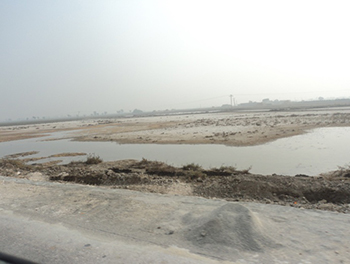» A review of salinisation in Pakistan
A review of salinisation in Pakistan

Groundwater and soil salinisation are major issues in the Indo-Gangetic plain, reducing the productivity of agriculture and impacting on other water users (Figure 1).
This case study aims to provide a review of groundwater salinity issues drawing on existing studies, mainly in Pakistan, to suggest the different controlling mechanisms and discuss the different strategies used to mitigate them.
There are many diverse sources of salinity information such as maps, reports, papers and databases available in the Indo-Gangetic plain relating to the issues of saline groundwater. The data sources are often of varying ages and quality and creating a coherent story between them is complex.
Key objectives
The specific objectives of the study are to:
- collate and review the major salinity studies in Pakistan
- summarise and systemise the findings for the review
- produce an overview report synthesising the salinity issues, mechanisms and management in Pakistan
Work to date
- Data review
Several hundred reports and maps on salinity in Pakistan have collated and reviewed. This data review has highlighted the complex various processes leading to groundwater salinity in Pakistan, including:- waterlogging and evaporation
- washing in irrigation salt residues
- low recharge leading to saline recharge
- historical connate saline water
- natural salinity from halite in the sediments
- saline intrusion from the sea
- runoff from saline soils
- Draft 60 page review report written and undergoing review
Project team
This case study involves researchers from the British Geological Survey, GW-MATE and MetaMeta.
Contact
Contact Dr Alan MacDonald for further information.







